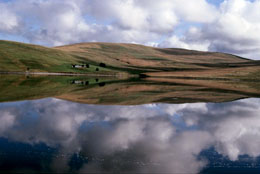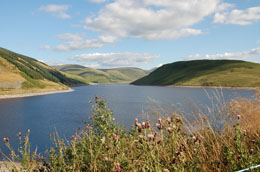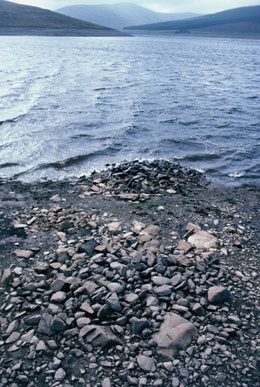
In the area of the upper reaches of the Rivers Tweed and Clyde, there are five major reservoirs which have been inspected by BAG during periods of low water levels; these are Camps and Daer in Crawford parish in the Clyde area and, Talla and Fruid in Upper Tweeddale. Megget lies over the watershed from the Tweed but is included because it has been checked out by the Group.

In each of these reservoirs an astounding array of archaeological sites and finds has been made. It has not been surprising to the local archaeologists since they have surveyed the landscapes surrounding them revealing a range of pre-historic and post medieval sites.
The problem with the reservoir sites is that they are being washed away as they become stranded at the waters edge during periods of varying water levels. The erosive effects of beach crashing waves can be dramatic and extreme in their power to move the surface features from the formerly dry landscapes.
Damage to, or preservation of sites is entirely dependant on a series of factors, some of which are constant while others are variable, for examples sites which are exposed at the changing levels of the waters edge are under severe threat of erosion, while sites deeper in the water will only be affected by top soil and vegetation removal. Even so, the otherwise protected sites in deeper and therefore calmer water, may still have important environmental material such as charcoal enriched soils removed.
The BAG have investigated these reservoirs and surveyed all sites which have been discovered and also excavated in part or completely some sites which are judged to be under acute threat of erosion.

The high quality and quantity of sites discovered has been a challenge to the voluntary group in terms of monitoring, surveying and excavation. Nearly every repeat visit to a reservoir has produced more data in the form of random finds or previously unrecorded monuments. Many of these records appear in individual reports for example Fruid Reservoir unenclosed platform settlements, Camps enclosed cremation cemeteries or Daer Mesolithic sites.
The message to be learned from our work is that the effects we are witnessing must be happening in most upland reservoir across Scotland, adding to an appalling loss of archaeological heritage for the country, if no one responds to it as we do in our area. A report on the effects within the reservoirs here will be forthcoming to demonstrate the need for urgent action to be taken nationally.
One hears so much in Scottish archaeology about coastal erosion, which is correct, but the even more serious erosion of our heritage in ploughed fields, reservoirs and forests must surely be considered in a national strategy for its protection either by record or by other mitigation.






